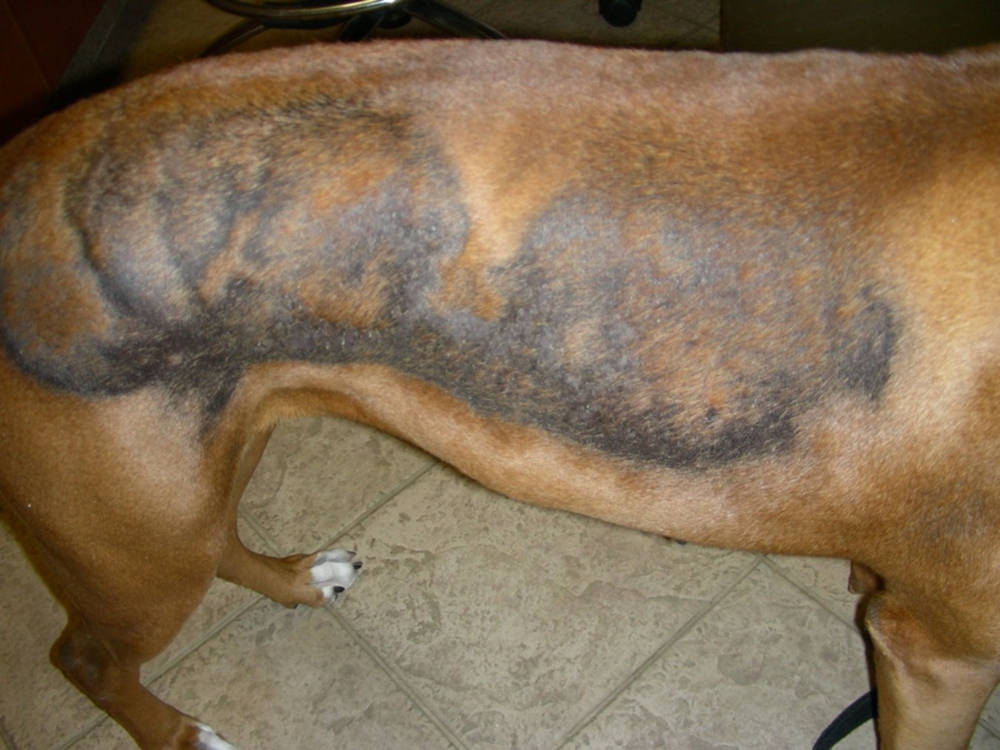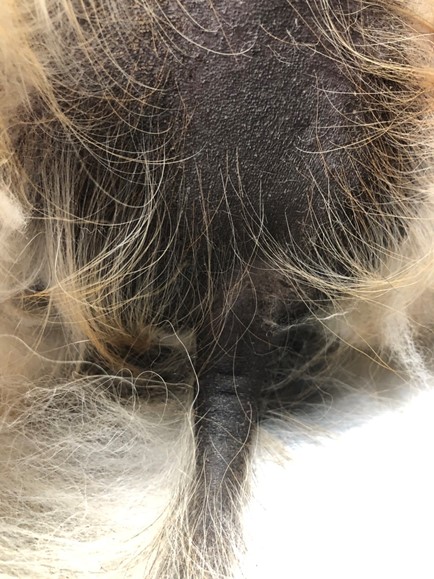
This article was updated on November 29th, 2023
1. Cyclical/Seasonal flank alopecia
There is usually a medium to large-sized area of alopecic and hyperpigmentation along the sides. This is a condition in which there is hair loss is associated with changes in light cycles and seasons. This is also associated with alterations in certain hormone levels (e.g., prolactin). This is a dysplastic disease of the hair follicles.
Certain breeds are predisposed to this condition, and this tends to wax and wane. Some years this may get better, some years this may remain the same or get worse. The way to get a firm diagnosis is by biopsies but is not usually necessary. The hairs are usually in a resting phase (telogen) and will usually eventually enter anagen again (growing stage).

Photo: © Ian Brett Spiegel VMD, MHS, DACVD
2. Alopecia X
This is a cosmetic disease in which there is patchy, non-itchy, hair loss and secondary hyperpigmentation. Previously, this was believed to be associated with a growth hormone deficiency.
Recently, it has been documented that there are mild abnormalities in hormone levels, For example, the progesterone levels may be increased. There is thought to be an abnormal adrenal steroidogenic synthesis.
Classically, patients with Alopecia X have the flanks (sides), collar/shoulder region, thighs, perineum (groin), and ventrum (bottom) most affected. Hyperpigmentation (black skin) usually develops at the same time as the alopecia. There is a loss of secondary hairs with splotchy regrowth of primary hairs. There is a lack of hair regrowth after clipping.
The breeds most affected include Pomeranian, Keeshound, Samoyed, and Chow Chow. Alopecia and hyperpigmentation gradually progresses often resulting in a pattern of complete hair loss bordered by normal adjacent hairs.
End-stage disease may result in complete alopecia of the neck, trunk, and upper legs. The head, lower legs, and sometimes the tail are spared. It is not uncommon to have ‘islands’ of normal hair present. Hair may re-grow (especially after trauma to an area (e.g., biopsy, sun-burn). The differential diagnosis includes: metabolic disease (hypothyroid, Cushing’s); follicular dysplasia; telogen effluvium, sertoli cell tumor (males), etc.

Photo: © Ian Brett Spiegel VMD, MHS, DACVD
Disclaimer: This website's content is not a substitute for veterinary care. Always consult with your veterinarian for healthcare decisions. Read More.


Be the first to comment